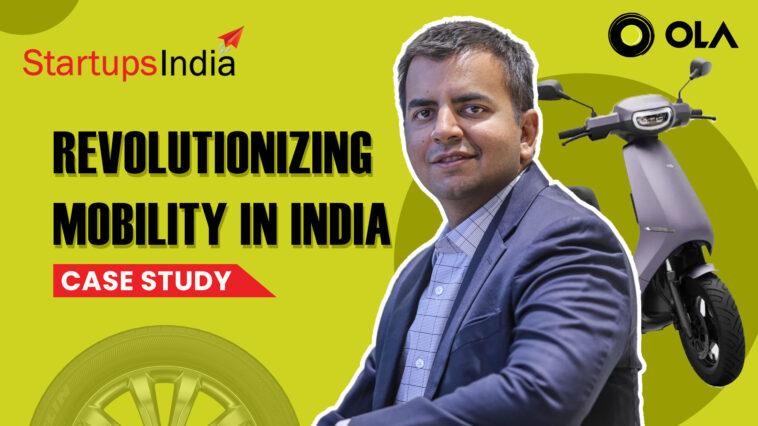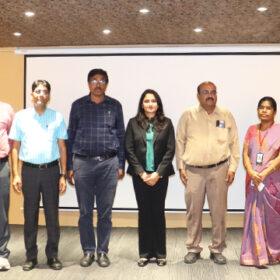Introduction
Ola, founded in 2010 by Bhavish Aggarwal and Ankit Bhati, is one of India’s most successful mobility startups. It disrupted the traditional taxi industry by introducing an app-based ride-hailing platform that provided affordable, accessible, and convenient transportation. Over the years, Ola has diversified into electric mobility, financial services, and global markets, positioning itself as a leader in the Indian transportation ecosystem.
Ola’s journey offers valuable lessons for students and entrepreneurs, showcasing innovation, adaptability, and resilience in a highly competitive market.
Founding Story and Vision
Early Struggles
Bhavish Aggarwal, an IIT Bombay graduate, initially started Olatrip.com, a car rental service for outstation travel. After experiencing poor service and high costs from local taxi providers, he saw an opportunity to disrupt the fragmented taxi industry in India. He partnered with Ankit Bhati to launch Ola Cabs in 2010, an aggregator model connecting customers with driver-partners.
Vision
Ola’s mission was to make transportation seamless and affordable for millions of Indians. It aimed to:
- Solve urban mobility challenges
- Empower drivers with stable incomes
- Reduce traffic congestion through ride-sharing
- Promote sustainable transport with electric vehicles (EVs)
Unique Strategies That Set Ola Apart
Ola’s rapid growth can be attributed to its innovative business strategies that distinguished it from competitors.
1. Hyperlocal Expansion
- Unlike global competitors like Uber, Ola tailored its services for the Indian market, expanding aggressively into tier-2 and tier-3 cities.
- By focusing on regional languages, local payment methods, and driver incentives, Ola gained an early-mover advantage.
2. Diverse Fleet Options
- Ola introduced multiple ride categories, catering to different customer segments:
- Ola Micro & Mini (affordable rides)
- Ola Prime (premium cars)
- Ola Auto & Bike (two- and three-wheeler options)
- Ola Rentals & Outstation (long-distance travel)
- This multi-category approach attracted a broader user base.
3. Driver-Centric Model
- Ola focused on driver-partner empowerment, offering low-commission structures, flexible work hours, and daily payouts.
- It launched Ola Fleet, leasing cars to drivers, solving the vehicle ownership barrier.
4. Innovation in Payments & Offers
- Introduced Ola Money, a digital wallet for cashless transactions.
- Partnered with banks for ride-now-pay-later schemes.
- Launched subscription models (Ola Pass, Share Pass) to retain customers.
5. Investment in Electric Mobility
- Ola Electric, launched in 2017, focuses on EVs, battery swapping, and green mobility solutions.
- In 2021, Ola opened India’s largest EV factory, aiming to produce 10 million electric two-wheelers annually.
Revenue and Funding Growth
Ola has seen exponential financial growth, backed by global investors.
- Revenue Growth:
- FY 2017: ₹1,178 crore
- FY 2019: ₹2,544 crore
- FY 2021: ₹983 crore (COVID-19 impact)
- FY 2023: ₹5,600 crore
- Funding Details:
- 2014: Raised $210 million from SoftBank.
- 2017: Secured $1.1 billion from Tencent and SoftBank.
- 2021: Raised $500 million for Ola Electric from Temasek and Tiger Global.
- 2023: IPO preparations underway with a valuation of $7-8 billion.
Challenges Faced
Despite its success, Ola faced multiple challenges:
- Regulatory Issues: Government policies on ride-sharing, licensing, and surge pricing impacted operations.
- Competition with Uber: Ola had to continuously innovate to retain market leadership.
- Driver Satisfaction: Protests over commission cuts and incentive reductions created tensions.
- COVID-19 Pandemic: Lockdowns led to a 90% drop in rides, forcing layoffs and restructuring.
- Profitability Concerns: Despite high revenues, achieving profitability remains a challenge due to high operational costs.
Growth and Expansion
- Ola in International Markets: Expanded to Australia, New Zealand, and the UK, competing with global ride-hailing services.
- Ola Electric’s Vision: Plans to launch affordable EVs and battery swapping stations across India.
- Ola Financial Services: Offers micro-loans, insurance, and credit solutions for drivers and riders.
- Autonomous Vehicles R&D: Investing in self-driving technology and AI-driven fleet management.
Key Takeaways for Entrepreneurs and Students
- Identify Market Gaps: Ola solved a major transportation problem in India by digitizing an unorganized industry.
- Hyperlocal Strategy Works: Adapting to local cultures, languages, and payment methods gave Ola a competitive edge.
- Diversification Ensures Longevity: Expanding beyond ride-hailing into EVs, finance, and global markets strengthened its business.
- Empower Your Workforce: Ola’s driver-centric approach created strong loyalty and engagement.
- Sustainability is the Future: Ola Electric’s investments in green mobility reflect the future of urban transportation.
- Surviving Setbacks: Despite regulatory hurdles, competition, and COVID-19 losses, Ola adapted and continued to grow.
Conclusion
Ola’s journey from a startup to India’s leading mobility platform demonstrates the power of innovation, adaptability, and customer-centric strategies. By constantly evolving its business model, embracing technology, and investing in sustainable transportation, Ola continues to shape the future of mobility in India and beyond.
For aspiring entrepreneurs, Ola’s success story serves as a blueprint for identifying market gaps, building scalable solutions, and adapting to challenges in a competitive landscape.





GIPHY App Key not set. Please check settings